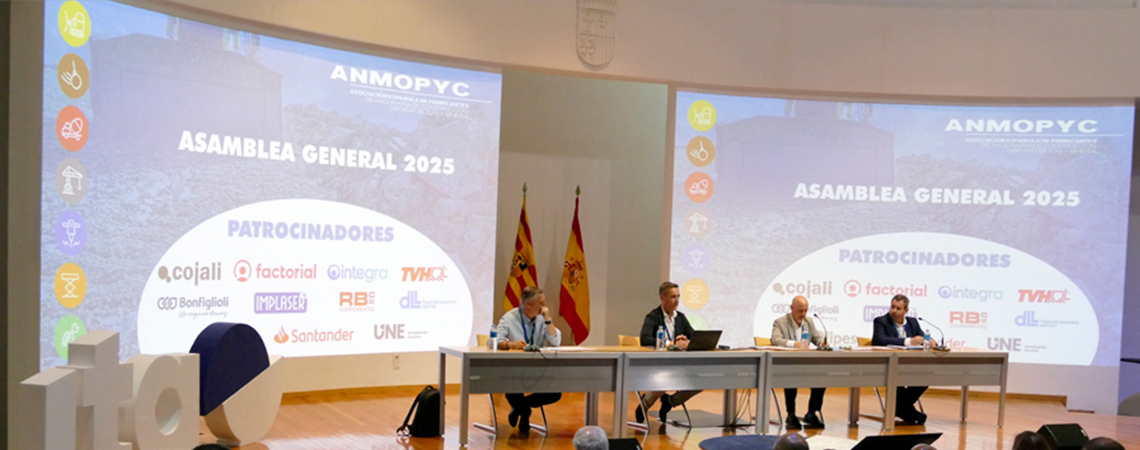Good news for South East Europe

Anmopyc News
17 Jul 2017
The recent optimism in the construction markets of South East Europe is set to continue, with expansion greater than GDP.
It said that the region was leaving behind a transitory 2016, when the absorption of funds available in the new EU programming period from 2014 to 2020 was still at a low level. The next few years are said to be characterised by expansion greater than GDP, with building construction predicted to outperform the total market, with a yearly average rise of 9%.
The small growth in the region’s total civil engineering market is being attributed to negative expectations in Romania.
The eight countries covered by EECFA are Bulgaria, Croatia, Romania, Russia, Serbia, Slovenia, Turkey and Ukraine, and its summer construction forecast was released on 16 June.
In the three Eastern European markets covered by EECFA, a scenario of no further market expansion is considered the most likely. Turkey and Russia, the two biggest markets by far covered by EECFA, are expected to show some similarities. In both countries, the forecasts are described as moderately optimistic in the civil engineering market. In the building construction market, the outlook is said to be clearly negative for Russia and neutral for Turkey.
In Ukraine, the recovery experienced in 2016 is expected to be sustained until 2019. Both building construction and civil engineering could expand further at a relatively good pace, EECFA said.
Looking at Serbia, predictions for the construction market have been revised upwards slightly against the 2016 winter forecast, confirming the trends in construction volumes.
EECFA said that the permit reform started in 2015, in particular, had been driving a new boom in building construction. This, combined with historically low interest rates, rising earnings and the improved financial conditions in the country, was making Serbia one of the main engines of economic growth in the West Balkans, it said.
Therefore, the outlook was the second most optimistic in the South Eastern Europe region with 11% annual average growth for the 2017 to 2019 period.
Expectations better
Expectations for the construction market in Croatia are now even better than in the winter 2016 forecast, with a projected 11.2% growth this year, a 7.1% rise next year and a smaller, 2.8% increase in the year after.
The bright spots were said to be that the country’s economic indicators were promising, and Croatia was getting better at applying for EU funds both at central and local governmental levels. Also, Croatia’s tourism sector is likely to keep expanding.
A negative factor hindering development might, however, be the ongoing Agrokor crisis – Croatia’s, and one of South East Europe’s largest conglomerates is facing bankruptcy – as EECFA felt that if it were to be mishandled, it could damage both the economy and the construction sector considerably.
The Slovenian construction industry was hit by bankruptcies of major construction firms and the deceleration of large-scale construction projects as a result of diminishing EU funds at the end of the EU financial period in 2014. It is expected to have registered a contraction of 9% in 2016.
The small growth in the region’s total civil engineering market is being attributed to negative expectations in Romania.
The eight countries covered by EECFA are Bulgaria, Croatia, Romania, Russia, Serbia, Slovenia, Turkey and Ukraine, and its summer construction forecast was released on 16 June.
In the three Eastern European markets covered by EECFA, a scenario of no further market expansion is considered the most likely. Turkey and Russia, the two biggest markets by far covered by EECFA, are expected to show some similarities. In both countries, the forecasts are described as moderately optimistic in the civil engineering market. In the building construction market, the outlook is said to be clearly negative for Russia and neutral for Turkey.
In Ukraine, the recovery experienced in 2016 is expected to be sustained until 2019. Both building construction and civil engineering could expand further at a relatively good pace, EECFA said.
Looking at Serbia, predictions for the construction market have been revised upwards slightly against the 2016 winter forecast, confirming the trends in construction volumes.
EECFA said that the permit reform started in 2015, in particular, had been driving a new boom in building construction. This, combined with historically low interest rates, rising earnings and the improved financial conditions in the country, was making Serbia one of the main engines of economic growth in the West Balkans, it said.
Therefore, the outlook was the second most optimistic in the South Eastern Europe region with 11% annual average growth for the 2017 to 2019 period.
Expectations better
Expectations for the construction market in Croatia are now even better than in the winter 2016 forecast, with a projected 11.2% growth this year, a 7.1% rise next year and a smaller, 2.8% increase in the year after.
The bright spots were said to be that the country’s economic indicators were promising, and Croatia was getting better at applying for EU funds both at central and local governmental levels. Also, Croatia’s tourism sector is likely to keep expanding.
A negative factor hindering development might, however, be the ongoing Agrokor crisis – Croatia’s, and one of South East Europe’s largest conglomerates is facing bankruptcy – as EECFA felt that if it were to be mishandled, it could damage both the economy and the construction sector considerably.
The Slovenian construction industry was hit by bankruptcies of major construction firms and the deceleration of large-scale construction projects as a result of diminishing EU funds at the end of the EU financial period in 2014. It is expected to have registered a contraction of 9% in 2016.
 Earthmoving, Compaction, Materials handling and Transport
Earthmoving, Compaction, Materials handling and Transport
 Machinery for Mining and Construction Special Works
Machinery for Mining and Construction Special Works
 Plants and Machinery for the Production of Construction Materials
Plants and Machinery for the Production of Construction Materials
 Light and Auxiliary Equipment
Light and Auxiliary Equipment
 Lifting Equipment for Persons and Loads
Lifting Equipment for Persons and Loads
 Auxiliary Equipment and Elements
Auxiliary Equipment and Elements
 Components, Spare Parts and Accessories
Components, Spare Parts and Accessories



